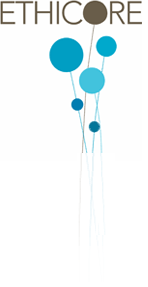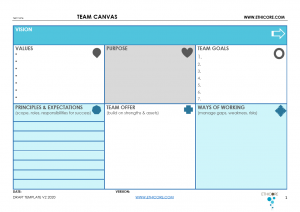Re-Group with a Strong Team Canvas
At times of crisis it helps to re-group and strengthen our teams. Whether our core team, project teams or partnerships; teams that are new or existing; taking time to sketch out a team canvas can be an energising and empowering team activity. A team canvas effectively captures ‘my team on a page’. It is a great tool to reset your scope and focus. Here is a quick guide to developing your team canvas.
VISION – What does success look like? Let’s get specific about the outcomes you want to see and in what timeframe. This can be short – medium term in times of crisis. I ask people to visualise this in a picture/description and take it from there.
PURPOSE – This is fundamental. What are we here for? Get to the real contribution your team are making to the goal: funding, increasing impact of interventions, etc. Keep asking ‘why/so what?’ until you get there.
VALUES – Keep this to 5-7 key values. They shape the way you deliver your purpose. For example: being evidence-based or working in partnership with others. Whatever they are, you they should clearly affect the way you make decisions or operate. Explore what values look like in your team’s day to day work?
TEAM GOALS – You have set your timeframe in your vision, so what are the SMART goals to get you there? Ask the team to bring their own personal goals and add them to the team goal. Keep adding the £s, people, impact, influence until you have a rounded team goal.
TEAM OFFER – The special sauce of any team. Start looking at the strengths and assets of the team. It is worth taking time to really get this right. Ask others to feedback – what is the value-add of our team?
PRINCIPLES AND EXPECTATIONS – Set out a clear scope for the team with roles and responsibilities. We start with what you do and don’t do, to begin to flush this out.
WAYS OF WORKING – Focus on what really makes a team tick – how you make decisions, communicate, who you work with, etc. Check through some of the issues and gaps, to make sure everyone is clear how you work.
This is a great team activity that can be done virtually, with teams visualising, sharing, adapting, editing. Sketch it out in your first session, then build the fuller picture until you have a team canvas on a page.
Contact me if you want more detailed advice, particularly for rapid project/partnership team activities in COVID-19 related response.





